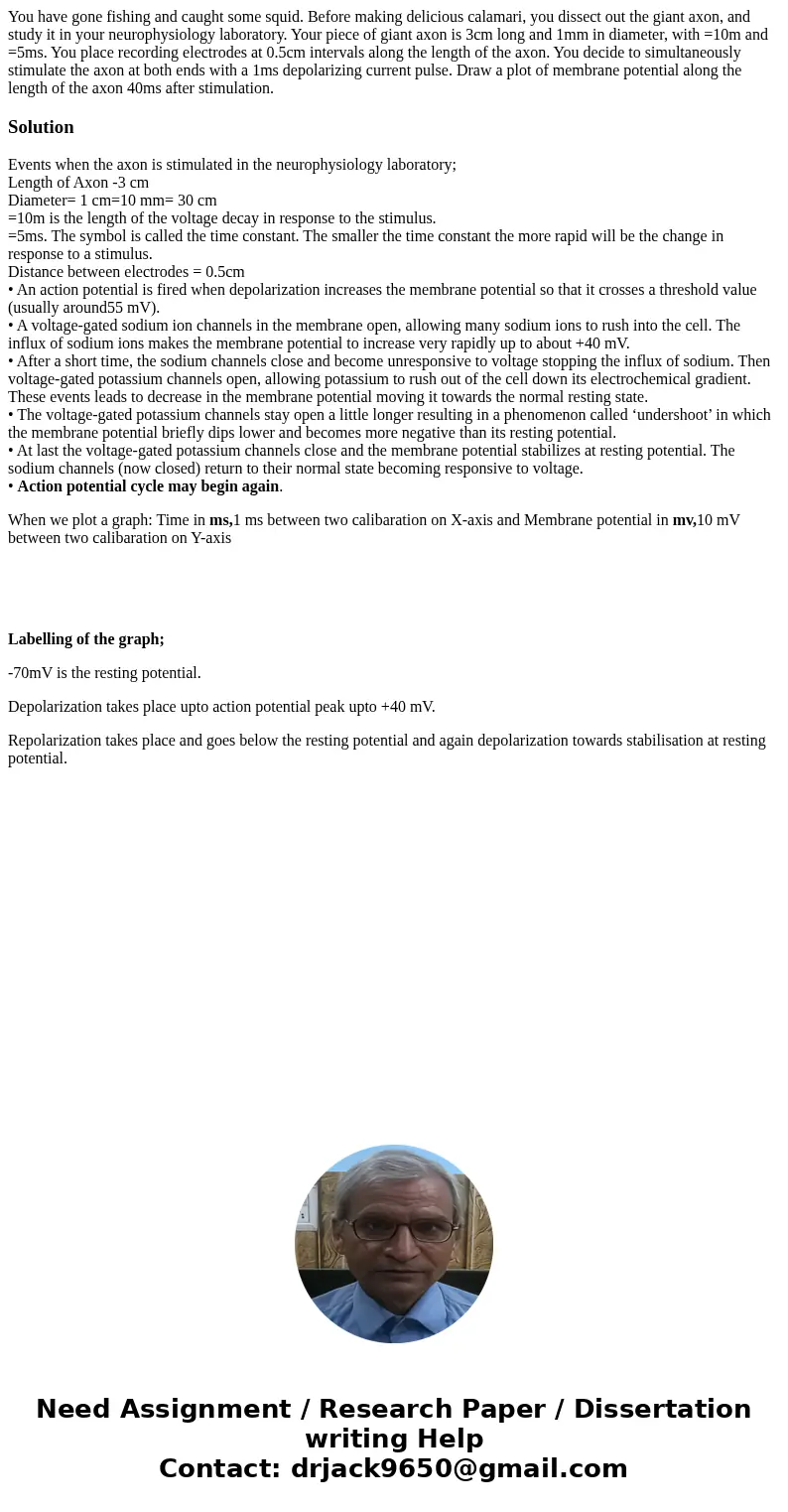You have gone fishing and caught some squid Before making de
You have gone fishing and caught some squid. Before making delicious calamari, you dissect out the giant axon, and study it in your neurophysiology laboratory. Your piece of giant axon is 3cm long and 1mm in diameter, with =10m and =5ms. You place recording electrodes at 0.5cm intervals along the length of the axon. You decide to simultaneously stimulate the axon at both ends with a 1ms depolarizing current pulse. Draw a plot of membrane potential along the length of the axon 40ms after stimulation.
Solution
Events when the axon is stimulated in the neurophysiology laboratory;
Length of Axon -3 cm
Diameter= 1 cm=10 mm= 30 cm
=10m is the length of the voltage decay in response to the stimulus.
=5ms. The symbol is called the time constant. The smaller the time constant the more rapid will be the change in response to a stimulus.
Distance between electrodes = 0.5cm
• An action potential is fired when depolarization increases the membrane potential so that it crosses a threshold value (usually around55 mV).
• A voltage-gated sodium ion channels in the membrane open, allowing many sodium ions to rush into the cell. The influx of sodium ions makes the membrane potential to increase very rapidly up to about +40 mV.
• After a short time, the sodium channels close and become unresponsive to voltage stopping the influx of sodium. Then voltage-gated potassium channels open, allowing potassium to rush out of the cell down its electrochemical gradient. These events leads to decrease in the membrane potential moving it towards the normal resting state.
• The voltage-gated potassium channels stay open a little longer resulting in a phenomenon called ‘undershoot’ in which the membrane potential briefly dips lower and becomes more negative than its resting potential.
• At last the voltage-gated potassium channels close and the membrane potential stabilizes at resting potential. The sodium channels (now closed) return to their normal state becoming responsive to voltage.
• Action potential cycle may begin again.
When we plot a graph: Time in ms,1 ms between two calibaration on X-axis and Membrane potential in mv,10 mV between two calibaration on Y-axis
Labelling of the graph;
-70mV is the resting potential.
Depolarization takes place upto action potential peak upto +40 mV.
Repolarization takes place and goes below the resting potential and again depolarization towards stabilisation at resting potential.

 Homework Sourse
Homework Sourse